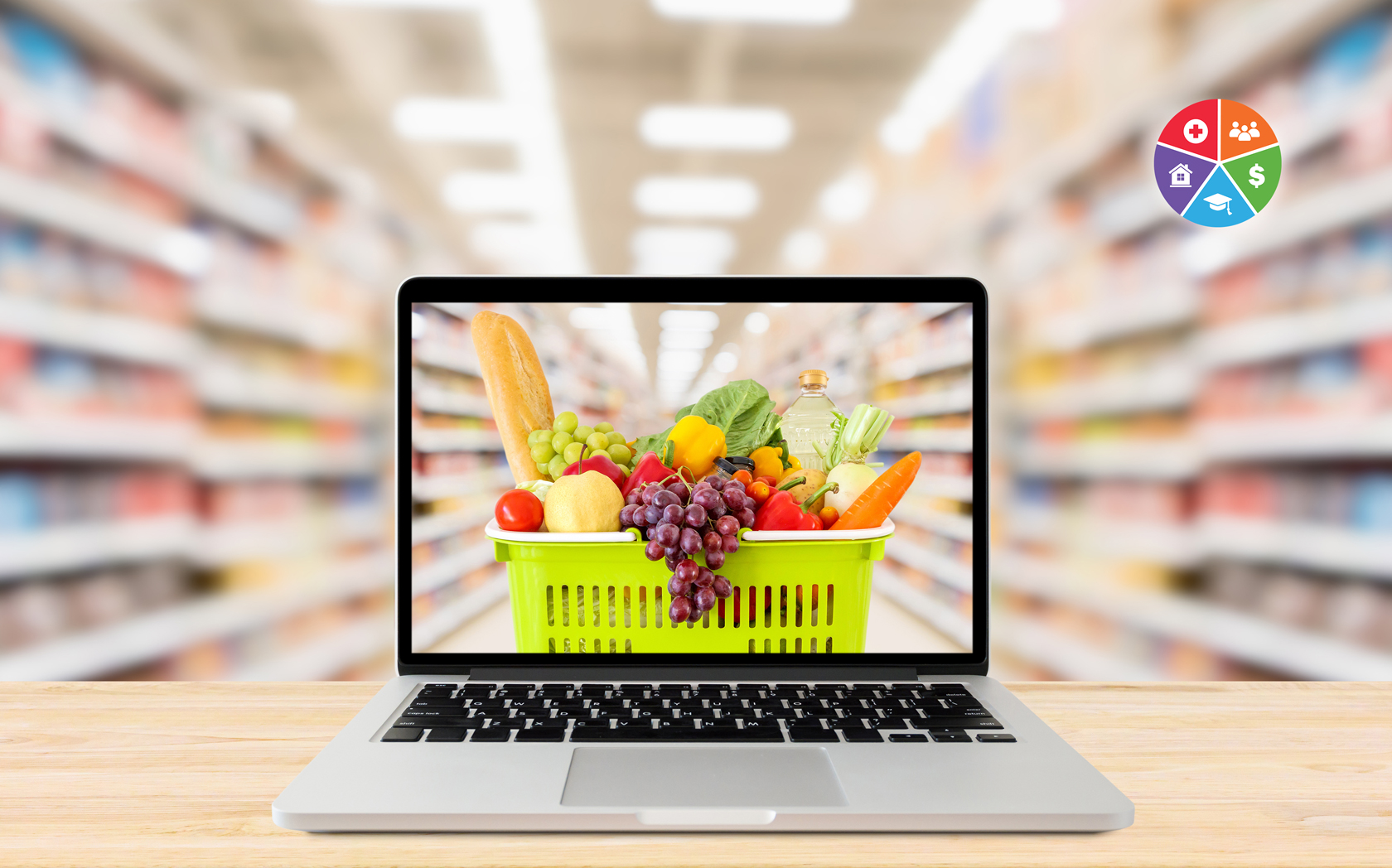
Using Technology to Advance Health Equity

May 5, 2023
There was a major push to implement and use technology in the healthcare industry during the height of the COVID-19 pandemic when telehealth appointments became the preferred method for providing medical services. However, outside of the pandemic, technology plays an ongoing role in health education and providing access to services. U.S. Hunger (USH), for instance, uses technology to provide emergency food assistance and to document the root causes of hunger in communities across the United States. Using a cloud-based software platform, Impact Manager, USH is able to serve individuals across the nation with dignity. Instead of waiting in line at a food bank to receive a box of food items, individuals experiencing food scarcity can apply online to have a Full Cart® box of fresh produce or pantry items delivered to their front door. This discrete option uses technology to remove some of the shame that is often associated with the experience of requesting or seeking assistance in the first place. By intentionally implementing technology, USH and various nonprofit and healthcare organizations can preserve the autonomy and dignity of their clients while connecting them to the resources they need. In this regard, technology has an important role to play in health equity; however, it must be implemented by private companies and nonprofit organizations in an equitable, purposeful, and standardized manner to prevent the perpetuation of existing health disparities.
Recently, USH joined a conversation alongside Kroger Co. and Sara Lee Bread® to discuss the use of data and technology in addressing food and nutrition insecurity at The Future of Food @SXSW2023. As the CEO of USH, Rick Whitted, stated, the collection and application of data allow organizations to “harness the voice” of the people they are serving so that they can begin to work upstream to determine what is causing people to experience hunger in the first place. Such information advises us on how to help so that we, as providers, avoid offering assistance based on assumptions, and instead address the socioeconomic factors that result in food insecurity. Technology also allows processes to be streamlined and objectively measured. According to Ezekiel Brooks, the CTO of USH, technology can be used to “force multiply your efforts,” resulting in a bigger impact with fewer people behind it. Individual needs can be documented and categorized under various measures such as those created by and used within the managed care industry (e.g., HEDIS). Such processes streamline the referral process and connect people with the services they need, opening the door for collaboration and allowing for impact-based measures of success. Technology is a convenient and obvious answer to improving operations and increasing collaboration, especially within the social and health services industries; however, access to technology and the Internet is not universal, so closing the digital gap must also be considered.
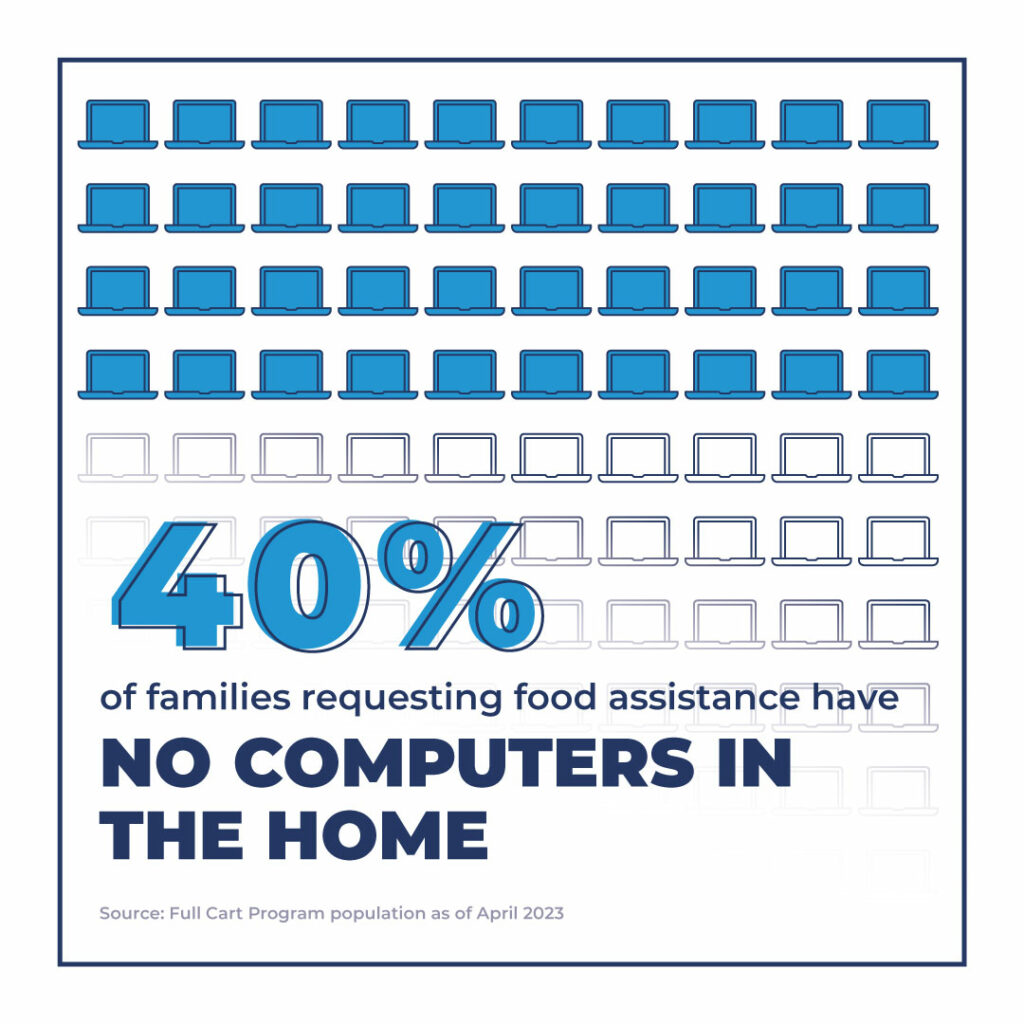
Techquity is a term that has been used to refer to the intentional and inclusive implementation of technology in the advancement of health equity. Internet connectivity is becoming increasingly recognized as a “super social determinant of health” due to its impact on the major social determinants of health (SDOH)- economic stability, the built environment, education, food, social and community context, and health care access.
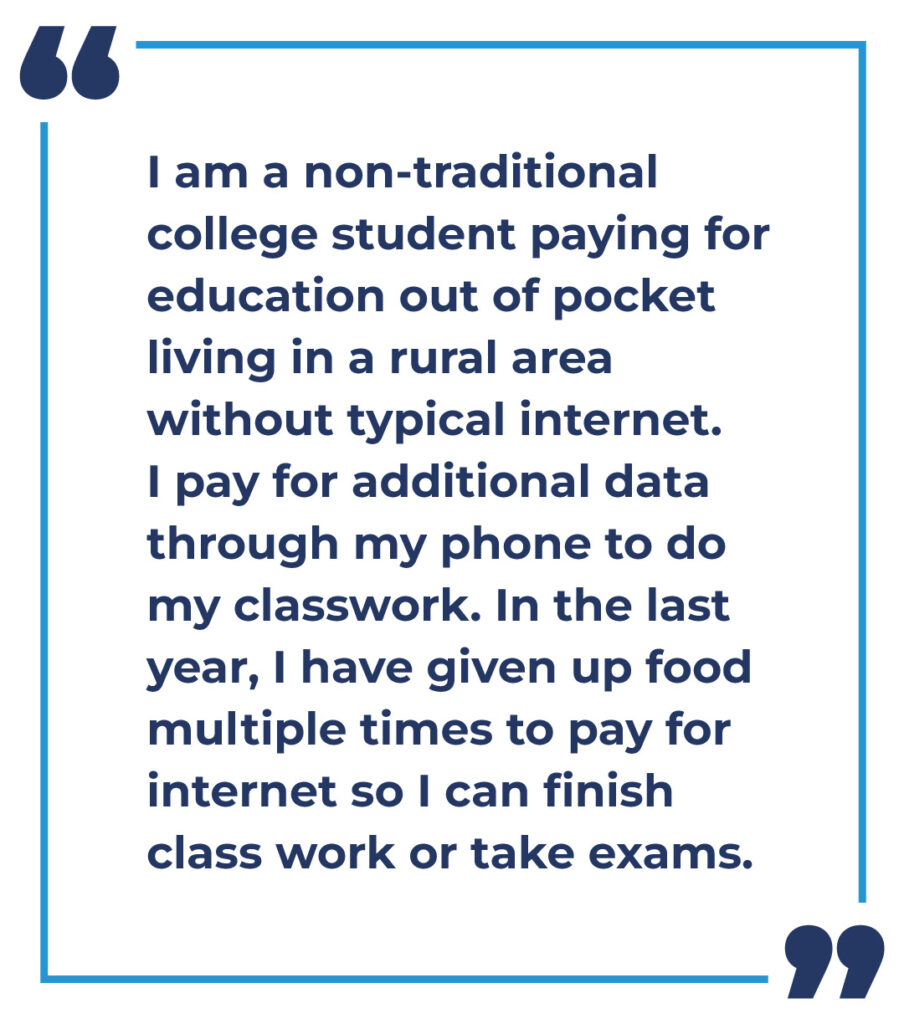
Despite the pervasiveness of technology in our everyday lives, not everyone has consistent access to the Internet or the services acquired through it. Within the most recently surveyed USH Full Cart population, 17% of applicants stated that they did not have Internet access and 40% reported that they did not have computers in their homes. Therefore, on a consistent and regular basis, they do not have the ability to attend virtual interviews, work or go to school remotely, submit paperwork online to request various benefits, attend telehealth visits, and more. Digital tools are not universal and inequitable broadband connectivity has negative health consequences. For instance, one Full Cart applicant shared, “We have lost our food stamps because we became homeless, and I didn’t have adequate access to [the] internet to complete my interview. Now we don’t have any food to eat.” This first-hand account illustrates the importance of Internet and the negative implications that a lack of digital connectivity can have on a person’s well-being and life. Internet access alone has been shown to eliminate barriers related to income and socioeconomic status, improving healthcare access and health outcomes for those who use it. In addition to individual-level barriers to connectivity, non interoperable data systems inhibit the exchange of information, especially within the healthcare industry, acting as an additional cause of health disparities. Thus, policies and procedures must be put into place to both increase broadband connection at the community level and increase collaboration and the streamlining of processes at the company and government levels.

Food insecurity and other health disparities arise from complex systemic issues that require innovative solutions to be solved. By recognizing techquity as an imperative for addressing the socioeconomic factors that lead to food insecurity and various health conditions, cross-sector organizations can leverage data and technology to increase access to nutritious food and resources to improve health outcomes.
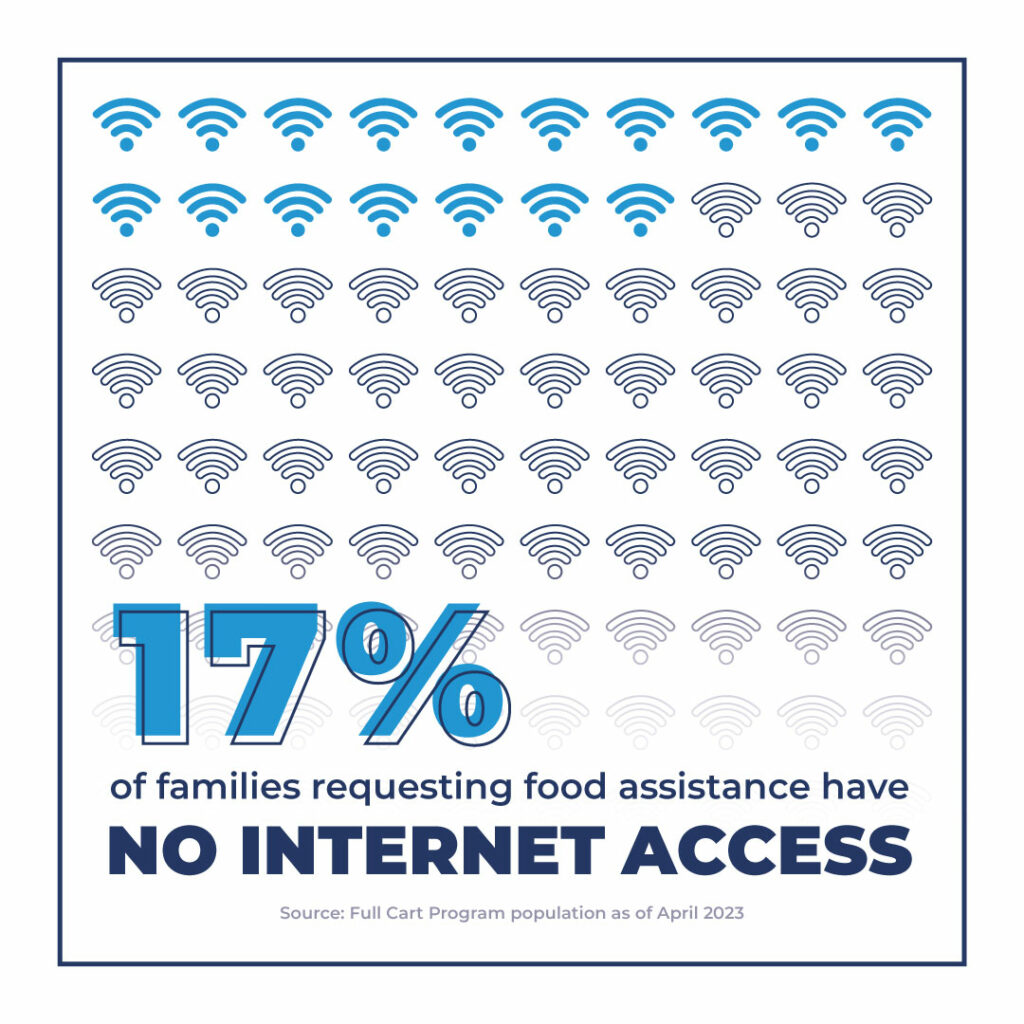
The first step involves working at the ground level and increasing access to affordable Internet and technologies, especially among rural populations. In combination with increasing access, we must also increase digital literacy so that everyone can utilize technology to its full capacity. Not all online platforms are designed with equity in mind and some individuals, such as those who are less tech-savvy or visually impaired, may have more difficulty accessing and using various websites and digital features. Thus, online platforms must be made accessible with features like multiple language formats, audio functionality, and visual imaging to communicate messages. With increased digital access and literacy, community-based and healthcare organizations will have a greater reach and the capacity to serve a more diverse population.If we are to advance health equity systemically, technology must be used collaboratively amongst stakeholders. Together they can use various platforms to enhance referral efforts, reduce the repetition of application questions, prevent the duplication of services, and track health-based outcomes. These collaborative efforts will facilitate connections and ensure that services are being provided appropriately and in a streamlined fashion to advance health and well-being for all.
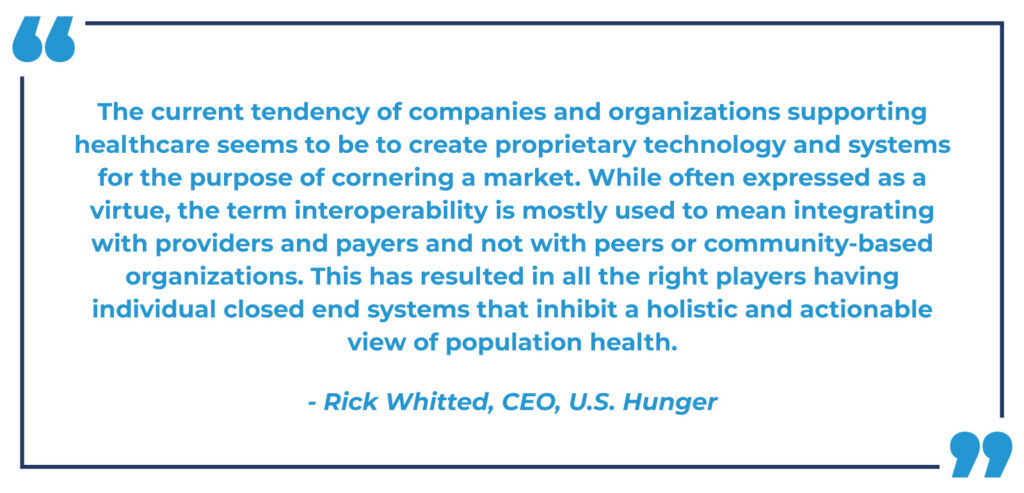
• • •
Subscribe to our Data & Research Newsletter Here.
U.S. Hunger (USH) is a non-partisan, not-for-profit established in 2010, which has mobilized more than 850,000 volunteers to distribute over 147 million nutritional meals as of July 2022. Utilizing real-time data analytics and technology to operate a national home delivery service for the food insecure, USH uses a SaaS-based data tool to gain comprehensive insight into what factors lead individuals to seek food assistance. We work alongside corporate and community partners to identify and provide food assistance to those in need through our Full Cart® program. For more information contact data@ushunger.org.


